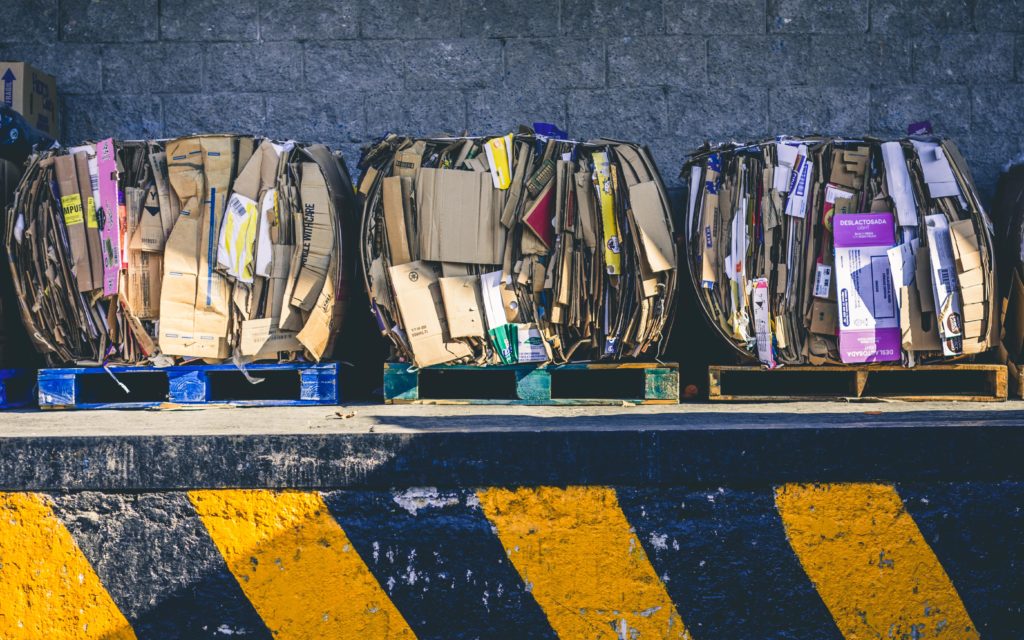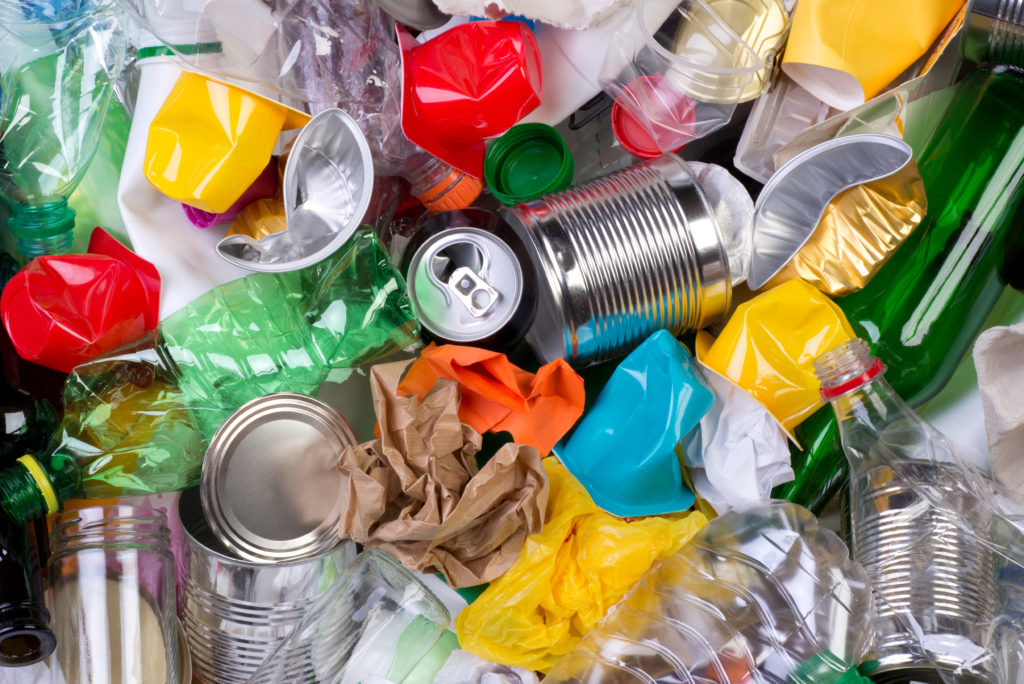Our Position on the Optimal Recycling System
The CPG industry has made sustainability, particularly packaging sustainability, a top priority.
With unprecedented commitments to improving the design of packaging — from source reduction, to fully recyclable or compostable design, to using recycled content — the CPG industry is packaging with the planet in mind to reduce our footprint.

Packaging plays a vital role in protecting the safety and quality of our products. Recyclable packaging can still play that vital role and be used repeatedly if there is a system capable of economically collecting and processing those materials. Today, that system is at a breaking point and recyclable packaging ends up where it shouldn’t — in landfills, where valuable materials are no longer available for reuse or are polluting the environment. This inflection point presents a tremendous opportunity to rethink the U.S. recycling and recovery system for the 21st century.
The following perspective represents the Consumer Brands Association’s recommended approach to achieving America’s recycling future and creating the system the U.S. needs.
Our Guiding Principles
The current recycling rates for some packaging materials are far too low. Many parts of the U.S. recycling system have not been updated in a decade and, as a result, the system is not working as it should, with valuable materials going to landfills.

1. Innovative, transformative interventions are needed to improve the performance of the system and create critical change.
2. Fixing and strengthening the recycling system is a shared responsibility. A circular economy requires all stakeholders at the table to drive change.
3. Real solutions must be scalable, market-based, measurable and impactful.
How We Get There
The CPG industry supports a national solution that has sufficient scale to protect the environment and address underlying problems in the recycling and recovery system. Real and lasting improvements to the domestic recycling and recovery system requires three elements.
Stakeholders
Everyone has a role to play. From packaging suppliers to CPG companies, waste and recycling industry to government, NGOs to consumers, each part of the recycling ecosystem must be willing to innovate, cooperate and change.

CPG companies consider the environmental impact when designing new packaging and can send a clear demand signal for recycled content to packaging suppliers. Consumer participation is critical to getting material to the waste and recycling industry. From there, the waste and recycling industry can take a leadership role in updating equipment regularly and developing new technologies to economically recover packaging. Governments can invest or incent market-based investments in recycling infrastructure, thinking beyond municipal borders toward harmonized, scalable systems — setting up NGOs to better provide innovative thinking and implementation assistance. Then every stakeholder is better positioned to educate consumers and ensure investments pay off.
Part 1: Establish a Standardized Foundation
Part 1
Challenge
There are nearly 10,000 municipal-run recycling programs, all with unique rules.
This patchwork prevents scale and directly contributes to vast consumer confusion, causing low participation rates and high levels of contamination because consumers either do not understand what to recycle or are discouraged from recycling at all.
Currently, CPG companies are committed to making their packaging more recyclable. In fact, 80 percent of the 25 largest CPG companies have made commitments to fully recyclable or compostable packaging by 2030 at the latest. But with nearly 10,000 different systems, it begs the question, “Recyclable, where?”
Part 1
Opportunity
Create a market-based system with simple and transparent rules, that allows industry to design clearly recyclable packaging, with better labeling to educate consumers, reducing confusion and raising participation rates.
Establishing national or regional standards that are uniform and scalable will provide clarity to consumers, manufacturers and waste management that could facilitate the highest possible rates of recycling. Greater cooperation and consistency among programs would provide guidance and clarity for stakeholders that does not currently exist.
Standardization is important for consumers and for creating efficient, scalable systems. Recyclable packaging should be recycled regardless of geographic location or whether it is in a single-family home, an apartment or office building. What is recyclable in one place should be recyclable in another.
The Consumer Brands Association is calling for national standards of recyclability and the design of recycling systems. Understanding the challenges of national adoption, state or regional standardization pilots could serve as proof-of-concept opportunities.
Part 1
Potential Path Forward
One way to achieve standardized recycling is to create national minimum standards for Materials Recovery Facilities (MRFs). If all MRFs in the United States (or in a region or state pilot) accepted, at minimum, the same types and forms of packaging for recycling, that would achieve harmonization.

Additionally, transparency and data are critical to a highly functioning and efficient recycling system. Therefore, reporting requirements should be established at the federal or, at minimum, state level by haulers and MRFs regarding collection, recycling and landfill data. This data should include recycling and landfill rates and the composition of those loads to state government or the Environmental Protection Agency (EPA) via harmonized reporting.
Standardization is the most critical step in the process. Without it, financing and end-market development won’t result in real and lasting change.
Part 2: Finance a Lasting Recycling System
Part 2
Challenge
There is a cost to creating a recycling system built for 21st century needs, but there is a vastly more substantial cost to doing nothing.
It will undoubtedly be a long, expensive process, but the current approach neither provides long-term, sustainable funding at scale nor does it revolutionize the U.S. recycling system. The CPG industry is open to a variety of dedicated funding options, provided the funding goes exclusively to a clearly defined, long-term solution that includes standardization.
Part 2
Opportunity
Standardization opens up financing opportunities that make the recycling system the United States needs for the long term a real possibility.
Part 2
Potential Path Forward
Financing mechanisms must reinforce or drive desired behaviors of all stakeholders, the CPG industry included. It is critical that all generated funds be dedicated exclusively to improving the recycling system, enhancing recycling infrastructure or educating consumers.

The first step?
Recommit existing revenue.
Several states already receive revenue from packaging and waste, like unclaimed bottle deposits and waste taxes, but divert those dollars to purposes outside of financing a lasting recycling system. Before any new fees or taxes are considered, states should first ensure that existing revenue is directed to the recycling system.
Part 2
Policies that have been successful and possible new concepts that the CPG industry could support, in conjunction with a standardized recycling system, include:
CHECK-OFF PROGRAM
Similar to USDA check-off programs, relevant private industries would voluntarily contribute a set amount of funds annually for consumer education.
PER ITEM FEE
A set fee per item sold, possibly focused on items that include non-recyclable or hard-to-recycle packaging, incurred either before or at retail point-of-sale.
WASTE GENERATOR FEE (BROAD-BASED)
All entities (companies, consumers, businesses, etc.) pay a set fee based on how much waste they send to landfill. The funds are used to pay for waste and recycling services.
PAY-AS-YOU-THROW (RESIDENTIAL FOCUS)
Residents pay a set fee for waste disposal (typically per bag of trash) and the funds are used to pay for waste and recycling services.
VIRGIN RESIN FEE
Virgin resin, which is used to make plastic, is currently less expensive than recycled resin. A fee for virgin resin would put it on price parity with recycled resin, making it more cost effective for use in packaging.
LANDFILL TIPPING FEE
An additional fee is levied on waste disposal in landfill in order to strategically raise the price of landfilling to create price parity with recycling. This model only works in places where landfilling material is notably less expensive than recycling.
Part 3: Strengthen End Markets to Meet Demand
Part 3
Challenge
Recyclable material that is not recycled contributes to a significant shortage of some post-consumer recycled materials.
As it stands, there is only enough to meet six percent of existing demand, which creates complications for the CPG industry, as companies make and work to meet significant commitments to using more recycled content in packaging. Sufficient levels of recovery are necessary to meet this surge in demand.
Part 3
Opportunity
Strengthen domestic end markets that support a reliable, cost-effective supply of recycled material for CPG companies.
China’s National Sword policy negatively influenced the economics of recycling, but there is significant opportunity if we achieve standardization to change those economics yet again — this time for the better.
Part 3
Potential Path Forward
New policies are needed that support both the development and maintenance of strong end markets. The federal and state governments have the largest role to play in creating and incenting recycling infrastructure and end-market development.
Any efforts to develop supply chains or end-markets for recycled material must expand beyond state borders. Restricting efforts to limit the use of recycled content or the processing of recycling within a state’s geographic borders is counterproductive to maximizing end-markets and packaging technologies that would benefit from additional waste content streams, which could be out-of-state sources.

Some ways stakeholders can spur end market development:
- Support increased post-consumer recycled content minimums in packaging, where viable.
- Conduct robust audits of existing infrastructure and improvement needs.
- Facilitate chemical recycling to improve the quality and quantity of available PCR materials.
- Create mandatory recycling or disposal bans on recyclable packaging.
The process outlined above is what the CPG industry believes will lead us to success and it welcomes full and robust engagement to arrive at the best solution for consumers and our planet.
The CPG industry is committed to a more sustainable future and is convening fellow stakeholders to achieve it.

